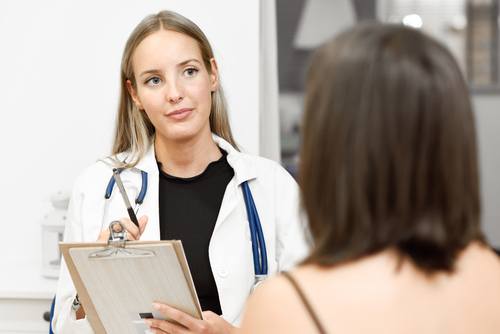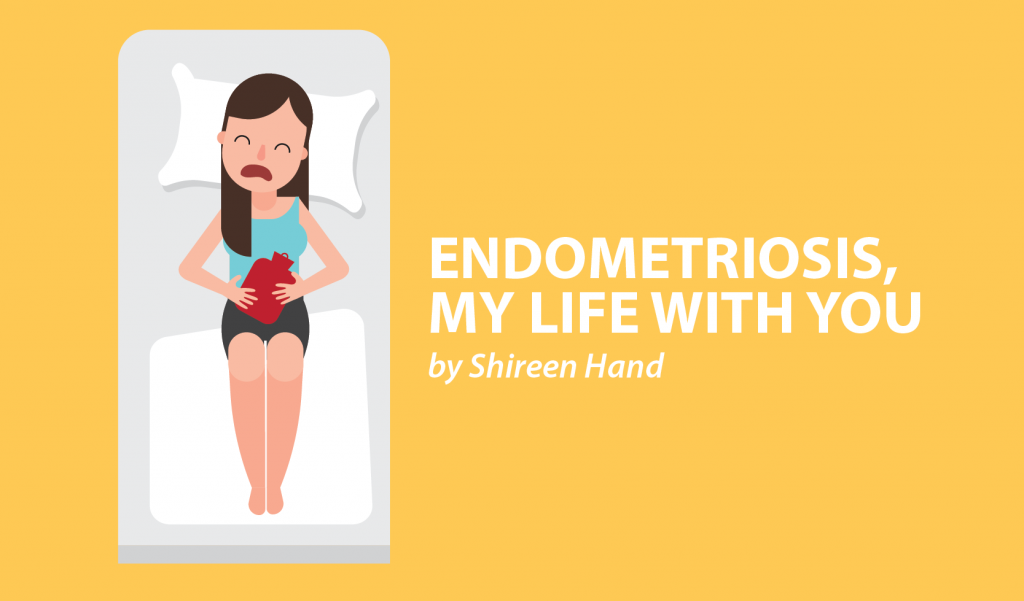Those who have endometriosis know all too well what it’s like to live with this life-changing disease. But it can be difficult to understand the impact endometriosis can have on a woman’s life, if you have never suffered with it yourself.
Here are 10 things that might help you understand endometriosis a little more.
Endometriosis isn’t just a bad period
Endometriosis is an all-encompassing disease. It isn’t just a bit of pain while you’re on your period. Endometriosis can affect every part of your life. It can cause problems every day of your reproductive life and can continue to do so after menopause.
Pain can affect you at any time, not just during your period
Some might get pain only while they are on their periods, others will be in pain every day. You might be feeling good and then have a sudden onset of pain. Or you might have had a busy day one day, and the next be in pain. Sometimes, you can predict when your pain will be worse, but endometriosis usually is unpredictable.
The pain isn’t always just in your abdominal area
Like period pain, the pain of endometriosis is felt in your abdominal area. But, unlike period pain, the pain endometriosis causes also can radiate to just about every other part of your body. This includes your back, legs, chest, neck, shoulders and arms. It can also cloud your mind and make it hard to concentrate or focus.
Endometriosis affects you physically and mentally
Endometriosis interferes with so many different aspects of a woman’s life. The pain alone can make you miss time from work, miss out on a social life, affect relationships. Endometriosis can make you feel isolated, and you may feel as if your body is against you. Anger, frustration, sadness and fear are just a few of the emotions that can affect your mental health. Depression is common in those with endometriosis.
Endometriosis will affect every woman differently
Endometriosis can be found anywhere from the vulva to your brain, and everywhere between. Because of this, even if you find two women with endometriosis in the same locations, the likelihood that they will be experiencing the exact same symptoms are relatively slim. Pain is the main symptom of endometriosis and will be felt by almost everyone, but other symptoms, such as pain during or after sex (dyspareunia) and infertility might not affect everyone. You also could have been diagnosed with stage 1 (mild) endometriosis, but be in more pain than someone with stage 4 (severe) endometriosis.
No single medication or treatment works for everyone
Because we all are different, it makes it difficult to find a treatment that will help us cope with the symptoms of endometriosis. Unfortunately, treatment is rarely as simple as taking a few painkillers. More times than not, what works for one person, won’t work for another.
Treatment options come under three categories: surgery, hormone treatment or pain relief, and may include options otherwise used for cancer treatment, for example Lupron Depot (leuprolide acetate) is used to treat the symptoms of prostate cancer in men. Some treatments are not easy on our bodies and coping with the side effects can sometimes be as difficult as coping with endometriosis itself.
Endometriosis isn’t easy to diagnose
Diagnosis, on average, can take up to 7½ years. Endometriosis has a variety of symptoms commonly associated with other illnesses, which makes misdiagnosis common. Not only must we try to make our doctors understand something neither of us can see, but there also is no one-stop blood test to confirm or eliminate possibility of the disease. The only way to diagnose endometriosis positively is through invasive surgery, which can create complications itself.
There is no cure
At some point post-diagnosis, all of us will be told that something or other will cure endometriosis. Hysterectomy, pregnancy, changes to your diet, yoga … the list goes on! Unfortunately, there is no cure for endometriosis. These options may bring relief for some, just not everyone.
You can develop endometriosis after having a child
Although the majority of women with endometriosis will be told that pregnancy can cure endometriosis, for many, their endometriosis will come back just as bad, if not worse, post-pregnancy. There also are some women who will develop symptoms of endometriosis only after having a child.
Endometriosis is inside our bodies, so you can’t see it
As with the common cold, endometriosis is invisible. Please keep this in mind when we speak out about the disease. Although we might look OK, please understand we have often have had to take a variety of medications before we even begin our day.
You can follow more of my journey over at www.emlwy.com.
***
Note: Endometriosis News is strictly a news and information website about the disease. It does not provide medical advice, diagnosis, or treatment. This content is not intended to be a substitute for professional medical advice, diagnosis, or treatment. Always seek the advice of your physician or other qualified health provider with any questions you may have regarding a medical condition. Never disregard professional medical advice or delay in seeking it because of something you have read on this website. The opinions expressed in this column are not those of Endometriosis News or its parent company, BioNews Services, and are intended to spark discussion about issues pertaining to endometriosis.


